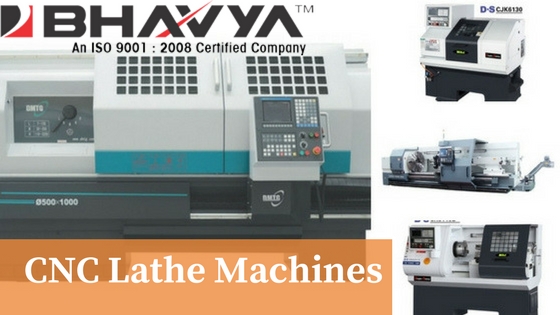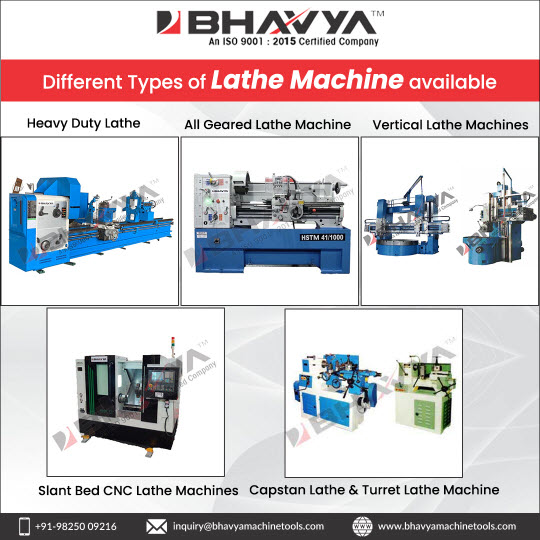In recent years, the manufacturing industry has witnessed significant advancements in technology, leading to increased efficiency and productivity. One such technological marvel that has transformed the manufacturing landscape is the Computer Numerical Control (CNC) lathe machine. With the ability to automate complex machining processes, CNC lathe machines have become a vital tool for precision manufacturing.
Over the years, CNC lathe machines have evolved significantly. From the early days of punch-card programming to the current state of sophisticated software-driven systems, these machines have become more user-friendly and capable of handling complex tasks. The future will witness the integration of even more advanced features, enabling manufacturers to achieve unprecedented levels of efficiency and productivity.
Advanced Automation Capabilities
Automation has always been a key feature of CNC lathe machines, and the future will bring even more advanced automation capabilities. Collaborative robots, or cobots, will work alongside human operators, handling repetitive tasks and allowing humans to focus on more complex and creative aspects of manufacturing. This collaboration will lead to increased productivity, improved safety, and reduced labor costs.
In an industry where production orders are often smaller batch sizes, implementing automation can help to improve productivity by streamlining operations. This can lead to increased capacity, decreased labor costs, and reduced production cycles.
In addition, it can also help to reduce energy consumption, as automation uses less power than human operators to run a CNC machine. This can make a significant impact on a facility’s overall energy efficiency, as well as its carbon footprint.
Furthermore, automation can allow a factory to keep a steady production level and prevent the need for excessive downtime. For example, if an operator is sick, or the machine breaks down, automation can pick up where it left off without any loss in design fidelity.
In addition to this, automation can save designs for future use. This means that even if a worker leaves the company, it can continue producing the same products without any issues. This can also improve staff morale, reducing the need for repetitive, tedious manual tasks that can be frustrating for employees and lead to fatigue.
Improved User Interfaces and Accessibility
To make CNC lathe machines more accessible to a broader range of users, manufacturers are investing in intuitive and user-friendly interfaces. Future machines will feature touchscreens, simplified programming languages, and interactive visualizations, making them easier to operate and program. This enhanced usability will enable manufacturers with varying skill levels to harness the power of CNC technology.
Integration of Artificial Intelligence
Artificial Intelligence (AI) is poised to play a crucial role in shaping the future of CNC lathe machines. By incorporating AI algorithms and machine learning capabilities, these machines will become smarter and more adaptive. They will be able to analyze vast amounts of data, make real-time adjustments, and optimize machining processes for superior performance. AI integration will enable predictive maintenance, reducing downtime and maximizing production efficiency.
The potential of CNC machines like the lathe to be paired with artificial intelligence is astounding. These robots are capable of doing a variety of tasks that were previously performed by humans and can help increase productivity, reduce cost, and improve overall efficiency. They can even act as a sort of assistant to human employees and help them complete tasks faster and more accurately.
Machines that are able to make products more quickly and reliably are critical for manufacturing companies with tight turn-around times. This is why engineers are working hard to make CNC machines more reliable so that they can meet production deadlines.
One of the ways that they are doing this is by incorporating 3D CAD viewers into their standard machine platforms. This allows technicians to view the progress of their work and helps them troubleshoot if there are any problems. Additionally, it can help reduce costs by reducing the need to hire extra workers to oversee the process. This means that more money can be invested into other important areas such as training, process integration, and production planning.
Integration of Internet of Things (IoT)
The Internet of Things (IoT) is revolutionizing various industries, and CNC lathe machines are no exception. IoT integration will enable real-time monitoring and data exchange, providing valuable insights into machine performance, maintenance needs, and production analytics. This connectivity will enhance operational efficiency, enable remote diagnostics, and facilitate predictive maintenance strategies.
Enhanced Precision and Accuracy
As demands for high-precision components continue to rise, CNC lathe machines are expected to deliver even greater levels of accuracy. Advancements in sensor technology and feedback systems will enable machines to monitor and adjust machining parameters with exceptional precision. This enhanced accuracy will open up new possibilities for intricate designs, complex geometries, and tighter tolerances.
Customization and Flexibility
In the future, CNC lathe machines will offer unprecedented levels of customization and flexibility. Manufacturers will be able to tailor the machines to their specific requirements, whether it’s configuring the workspace, integrating specialized tooling, or adapting to different material properties. This customization will enable manufacturers to optimize their production processes and respond swiftly to changing market demands.







